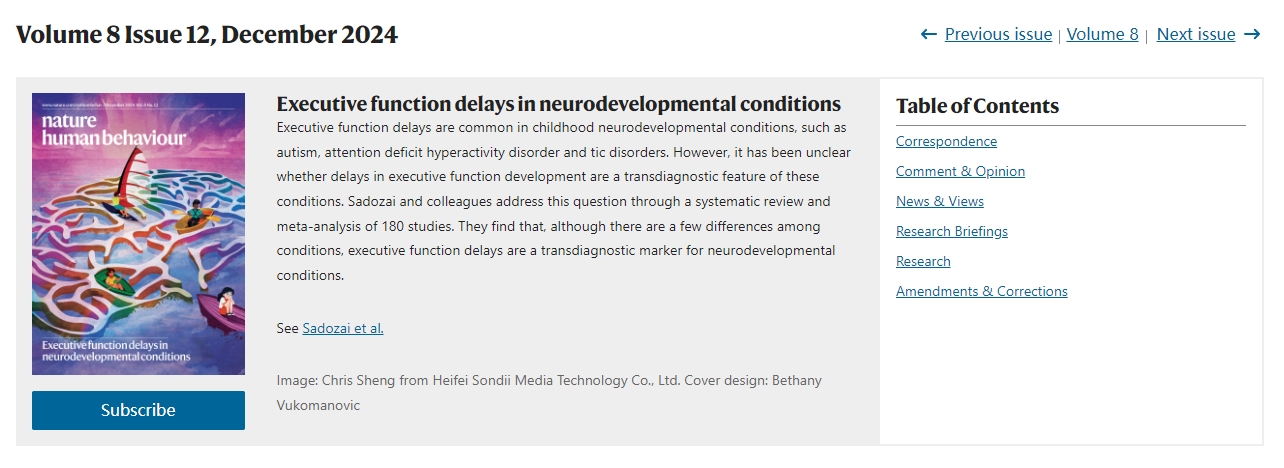The cover of this issue of Nature Human Behaviour is “Executive function in children with neurodevelopmental conditions: a systematic review and meta-analysis” published by Professor Adam Guastella of the University of Sydney.

Volume 8 Issue 12, December 2024
Ayesha K. Sadozai, Carter Sun, Eleni A. Demetriou, Amit Lampit, Martha Munro, Nina Perry, Kelsie A. Boulton & Adam J. Guastella

Executive function (EF) delays are well-documented in pediatric neurodevelopmental disorders (NDCs). However, there is no consensus on whether EF delays represent a transdiagnostic feature of NDCs. To gain further understanding of the role of EF delays in NDCs, we conducted a systematic review and meta-analysis, synthesizing 180 studies that reported comparisons of two or more NDCs in terms of EF and explored differences between NDCs and the effects of moderators such as sex, age, publication year, DSM (Diagnostic and Statistical Manual of Mental Disorders) version, and assessment type.
The study included participants aged 18 or younger, assessed using established EF measures across seven domains: attention, fluency, set shifting, set switching, response inhibition, planning, and working memory.
Research Significance
Results showed that all NDCs showed moderate EF delays compared with controls (effect size g = 0.56, 95% confidence interval 0.49–0.63), confirming that EF delays are a transdiagnostic feature of neurodevelopmental delays. The study also found that comorbidity, DSM-5 criteria, and the use of informant measures increased the effect size of EF delay (g=0.72, 95% confidence interval 0.59–0.86).
Children with tic disorder (TD) had smaller EF delays, children with attention-deficit/hyperactivity disorder (ADHD) had larger delays in attention, response inhibition, planning, and working memory, and children with autism spectrum disorder (ASD) had larger delays in set switching. These findings help to better understand the EF differences between different NDCs.
Research Prospects
The results of this study support the transdiagnostic model of neurodevelopment and provide a basis for further scientific research on how EF delay affects brain circuits, symptom characteristics, and functional developmental sensitivity. Through methods such as neuroimaging and genetics, the relationship between EF delay and brain structure and function, as well as the impact of genetic variation on EF delay, will be studied. Develop interventions for EF delay and evaluate their effectiveness in improving symptoms and function in children with NDCs. Conduct long-term follow-up studies to understand the impact of EF delay on the long-term development and social adaptation of children with NDCs, as well as the long-term effects of interventions.
This study provides an important basis for understanding the role of EF delay in NDCs and provides direction for future research. Through in-depth research and effective intervention, it is expected that better support and treatment will be provided for children with NDCs.
Cover Design Process
Our hours
Beijing time: 9:00-18:00